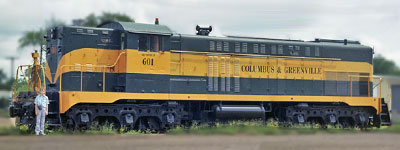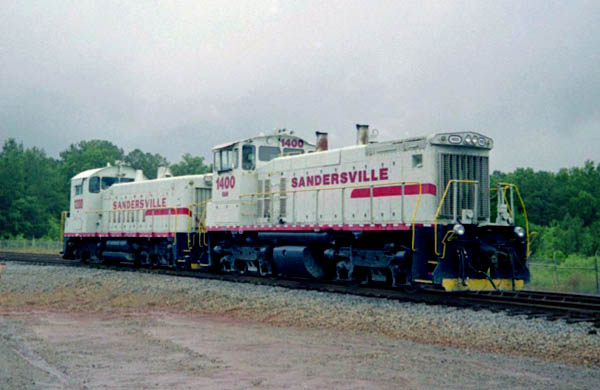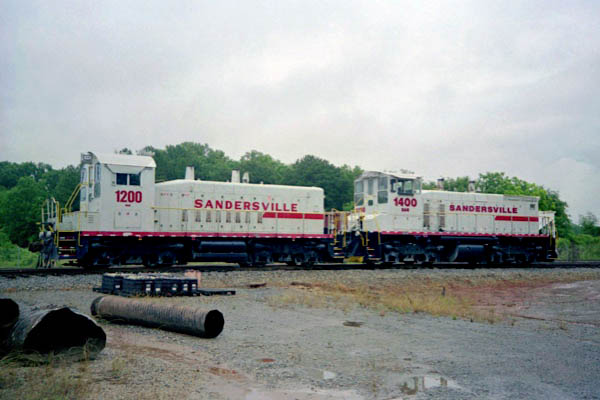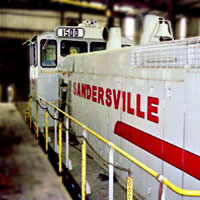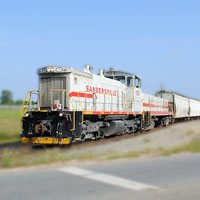


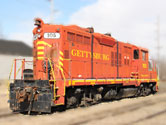




Shortline


 |
Sandersville RailroadThe Kaolin Road — "As wide as all the rest" |

Sandersville, Ga / May 2021 / RWH

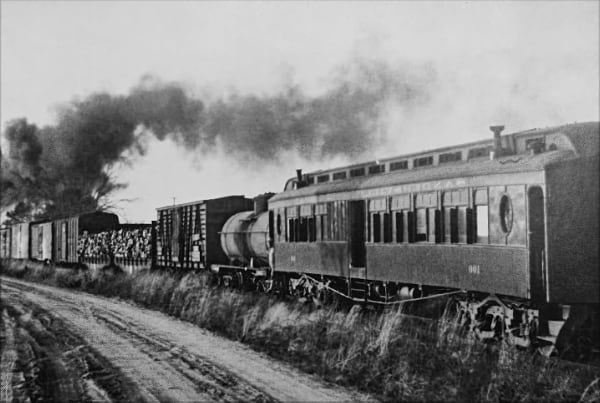 In 1916, Ben Tarbutton was asked to take over the operation of the Sandersville Railroad by the organizing group. They were getting older and wanted a young businessman to run the company. The owners agreed to sell him the company at a favorable price if he agreed to operate it for five years. Back in those days, the railroad hauled freight, mail, express, and passengers.
In 1916, Ben Tarbutton was asked to take over the operation of the Sandersville Railroad by the organizing group. They were getting older and wanted a young businessman to run the company. The owners agreed to sell him the company at a favorable price if he agreed to operate it for five years. Back in those days, the railroad hauled freight, mail, express, and passengers.
 In the 1930s, it was common practice for railroad officials to exchange passes for passenger rail travel allowing the recipient to ride for free. Ben Tarbutton wrote the president of the Pennsylvania Railroad and asked for a pass. The Pennsylvania Railroad president wrote back that the Pennsylvania covered many thousands of miles while the Sandersville Railroad went only three miles. Tarbutton replied, "Yes, that is true, but my railroad is just as wide!"
In the 1930s, it was common practice for railroad officials to exchange passes for passenger rail travel allowing the recipient to ride for free. Ben Tarbutton wrote the president of the Pennsylvania Railroad and asked for a pass. The Pennsylvania Railroad president wrote back that the Pennsylvania covered many thousands of miles while the Sandersville Railroad went only three miles. Tarbutton replied, "Yes, that is true, but my railroad is just as wide!"
Ironically, the Sandersville Railroad is still operating today while the Pensy is not.
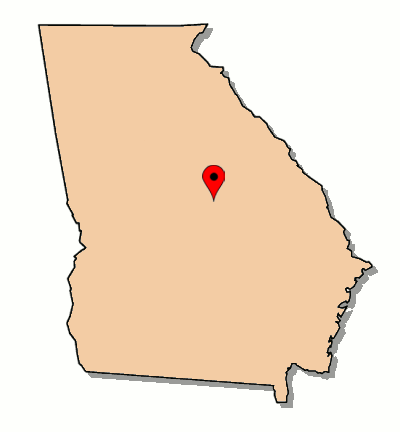
 ocated in central Georgia, the renowned Sandersville Railroad operates 9 miles of shortline trackage between a Norfolk Southern interchange at Tennille, Georgia (previously Southern, originally Central of Georgia) and the shortline's northern terminus at Kaolin. However, the railroad includes many other miles of branches and industrial trackage along its right of way, totalling nearly 40 miles of rail. Organized in 1893 as a subsidiary of the Central of Georgia, the physical footprint of the line did not reach its current full size until 1957. The "Kaolin Road" has been privately owned by the Tarbutton family of Sandersville since 1916 — currently run by the family's third generation. The Sandersville remains an active shipper of kaolin (white clay), wood chips, plastics, and various transload commodities, all making use of a fleet of five locomotives (and two slugs) and over 400 freight cars. Railcar storage and other services are also provided. Headquarters and maintenance shops are located in Sandersville.
ocated in central Georgia, the renowned Sandersville Railroad operates 9 miles of shortline trackage between a Norfolk Southern interchange at Tennille, Georgia (previously Southern, originally Central of Georgia) and the shortline's northern terminus at Kaolin. However, the railroad includes many other miles of branches and industrial trackage along its right of way, totalling nearly 40 miles of rail. Organized in 1893 as a subsidiary of the Central of Georgia, the physical footprint of the line did not reach its current full size until 1957. The "Kaolin Road" has been privately owned by the Tarbutton family of Sandersville since 1916 — currently run by the family's third generation. The Sandersville remains an active shipper of kaolin (white clay), wood chips, plastics, and various transload commodities, all making use of a fleet of five locomotives (and two slugs) and over 400 freight cars. Railcar storage and other services are also provided. Headquarters and maintenance shops are located in Sandersville.

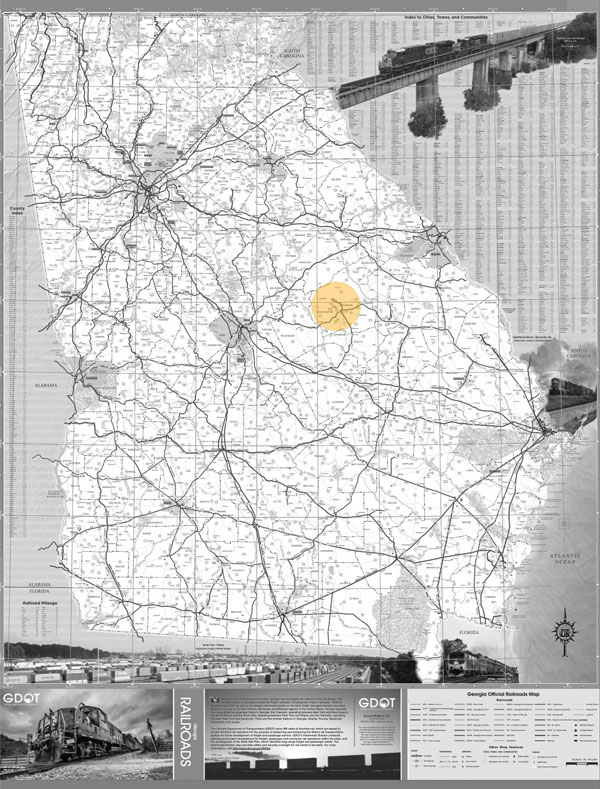
Georgia state map / collection
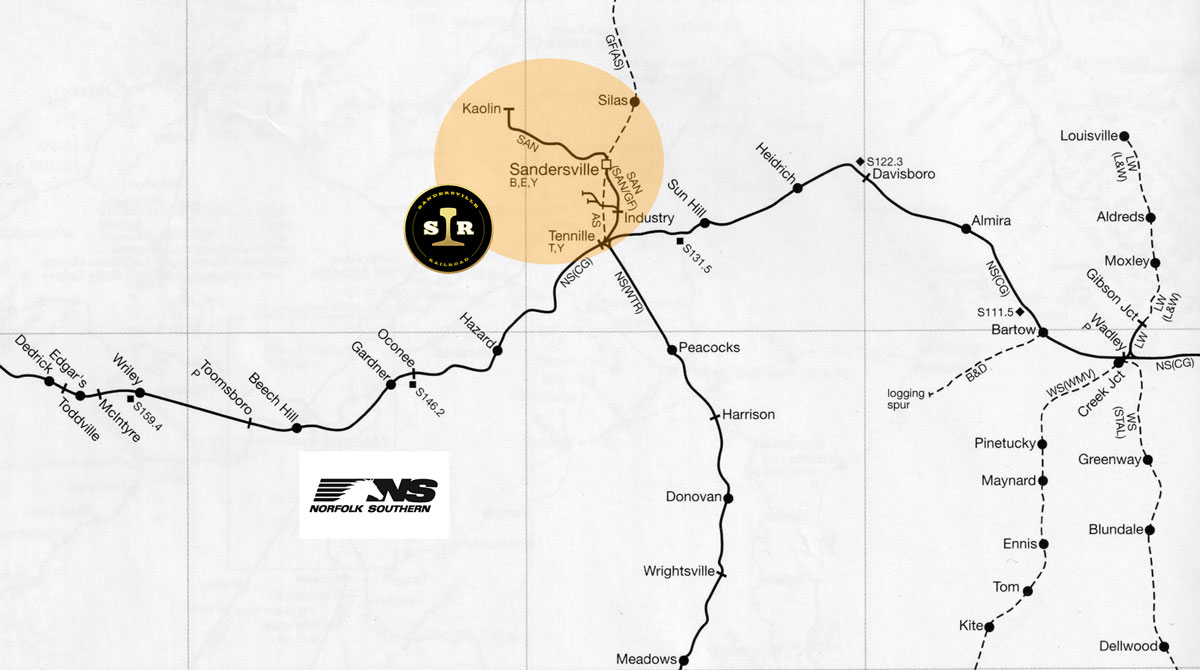
SAN context map / RWH

SAN overview map / SAN website

The Sandersville Railroad might well be called the poster child for a successful shortline railroad operation.
Albert M. Langley, Jr. / 2005
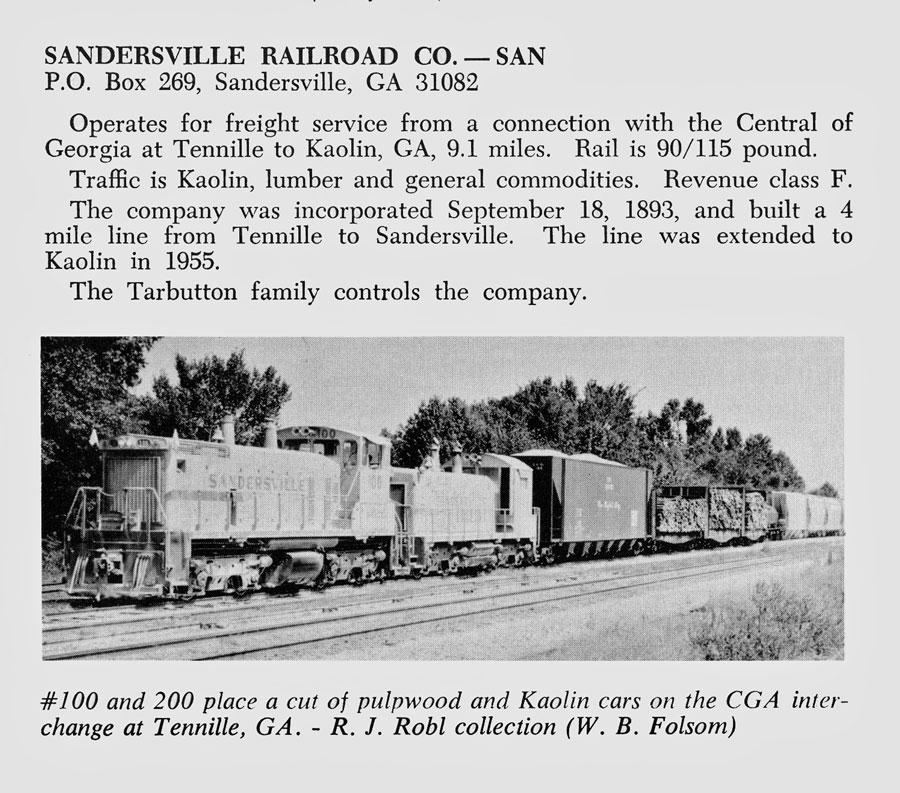
from American Shortline Railway Guide - 1975 / collection

 KAOLIN, also called china clay, soft white clay that is an essential ingredient in the manufacture of china and porcelain and is widely used in the making of paper, rubber, paint, and many other products. Kaolin is named after the hill in China (Kao-ling) from which it was mined for centuries. Samples of kaolin were first sent to Europe by a French Jesuit missionary around 1700 as examples of the materials used by the Chinese in the manufacture of porcelain.
KAOLIN, also called china clay, soft white clay that is an essential ingredient in the manufacture of china and porcelain and is widely used in the making of paper, rubber, paint, and many other products. Kaolin is named after the hill in China (Kao-ling) from which it was mined for centuries. Samples of kaolin were first sent to Europe by a French Jesuit missionary around 1700 as examples of the materials used by the Chinese in the manufacture of porcelain.
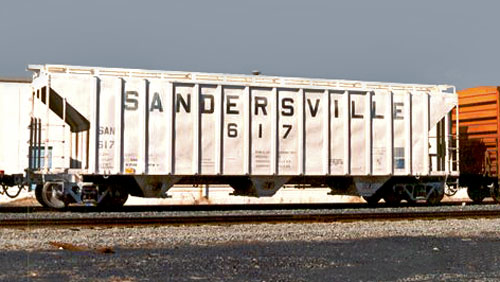 In its natural state kaolin is a white, soft powder consisting principally of the mineral kaolinite, which, under the electron microscope, is seen to consist of roughly hexagonal, platy crystals ranging in size from about 0.1 micrometre to 10 micrometres or even larger. These crystals may take vermicular and booklike forms, and occasionally macroscopic forms approaching millimetre size are found. Kaolin as found in nature usually contains varying amounts of other minerals such as muscovite, quartz, feldspar, and anatase. In addition, crude kaolin is frequently stained yellow by iron hydroxide pigments. It is often necessary to bleach the clay chemically to remove the iron pigment and to wash it with water to remove the other minerals in order to prepare kaolin for commercial use.
In its natural state kaolin is a white, soft powder consisting principally of the mineral kaolinite, which, under the electron microscope, is seen to consist of roughly hexagonal, platy crystals ranging in size from about 0.1 micrometre to 10 micrometres or even larger. These crystals may take vermicular and booklike forms, and occasionally macroscopic forms approaching millimetre size are found. Kaolin as found in nature usually contains varying amounts of other minerals such as muscovite, quartz, feldspar, and anatase. In addition, crude kaolin is frequently stained yellow by iron hydroxide pigments. It is often necessary to bleach the clay chemically to remove the iron pigment and to wash it with water to remove the other minerals in order to prepare kaolin for commercial use.
Encyclopaedia Britannica

Sandersville, Ga / May 2021 / RWH
Scrapbooks


Publications


1893 Official Guide ad / collection

1895 Official Guide ad / collection

1910 Official Guide ad / collection

1920 Official Guide ad / collection

1930 Official Guide ad / collection
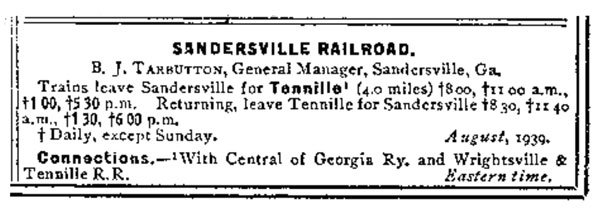
1940 Official Guide ad / collection
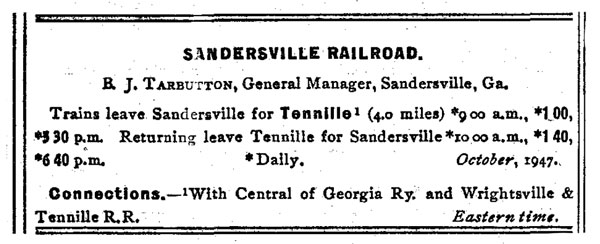
1948 Official Guide ad / collection
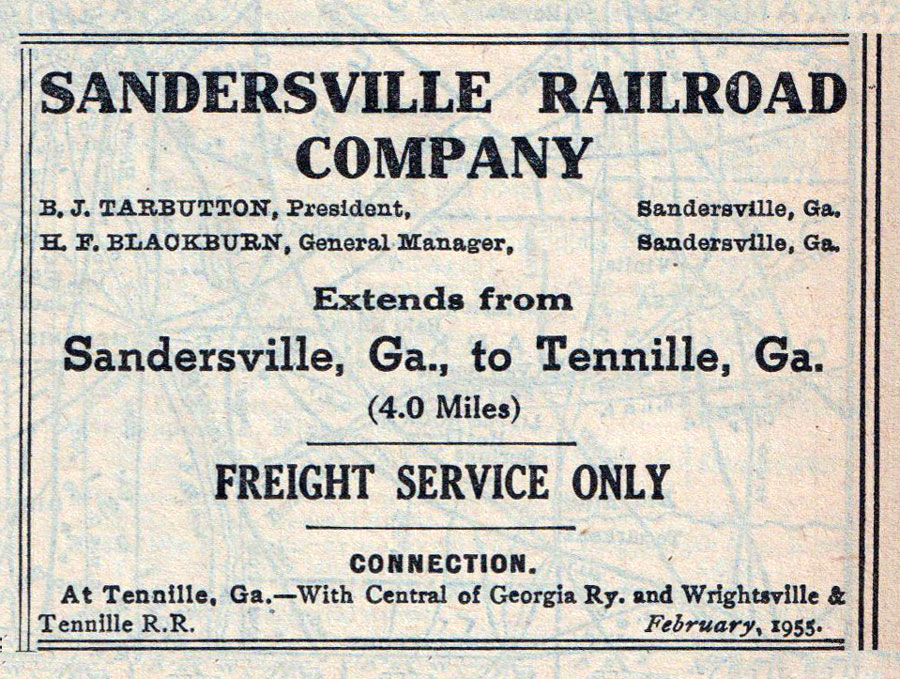
1955 Official Guide ad / collection
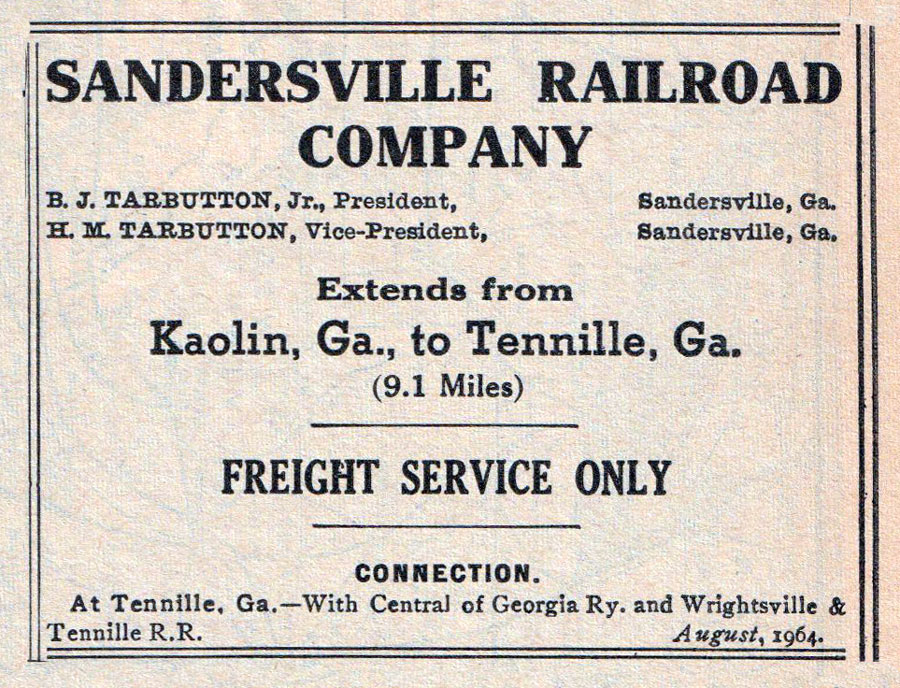
1965 Official Guide ad / collection

1974 Official Guide ad / collection

1982 Official Guide ad / collection
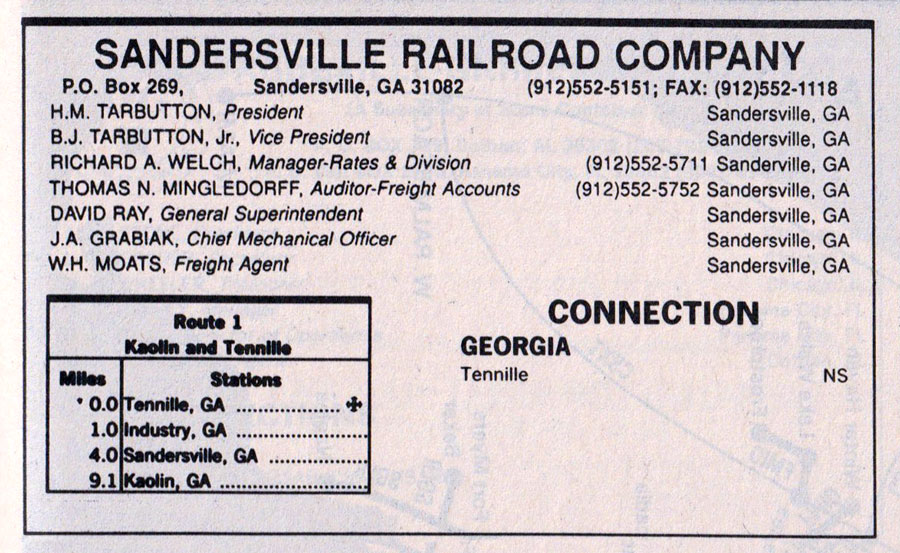
1994 Official Guide ad / collection
 Clippings
Clippings

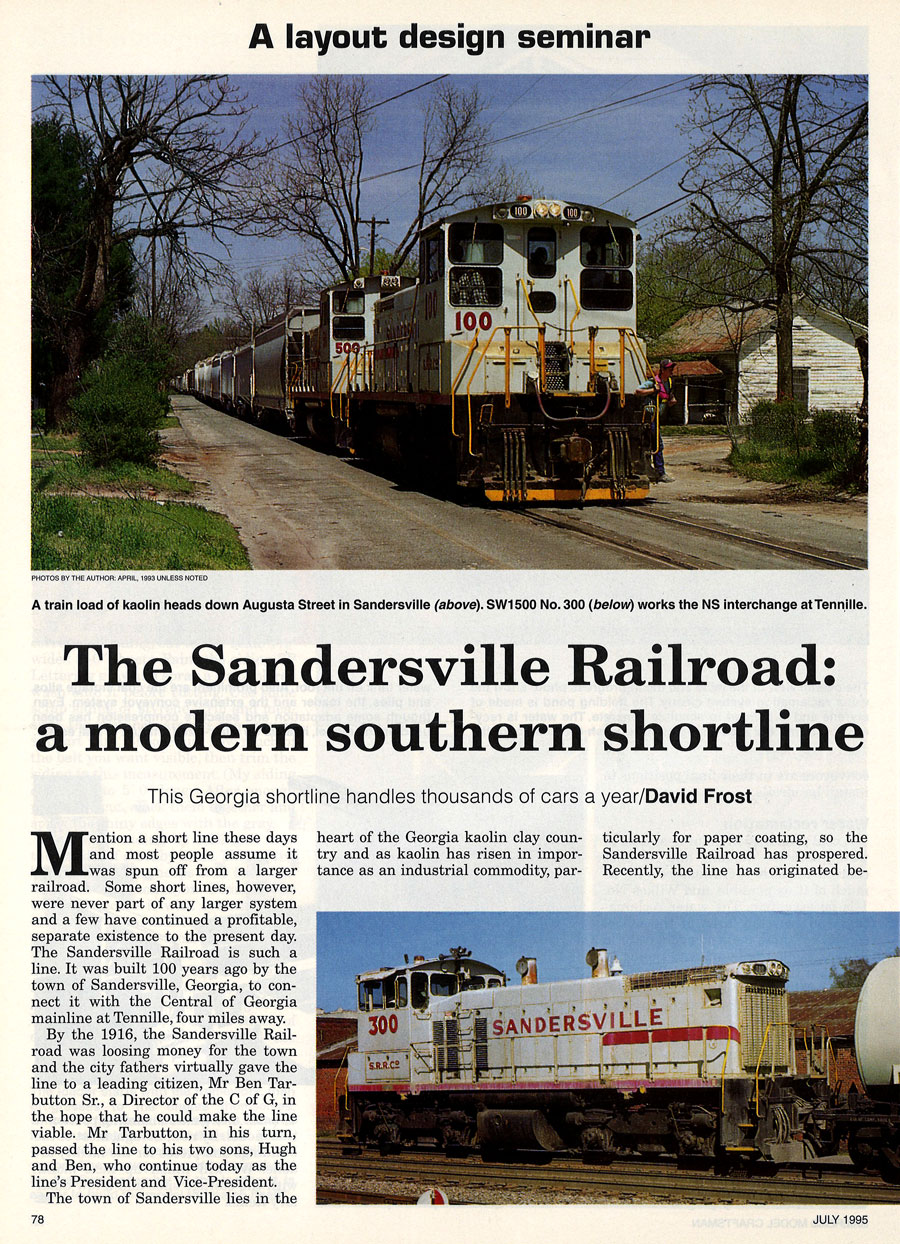
from Railroad Model Craftsman magazine - Jul 1995 / collection
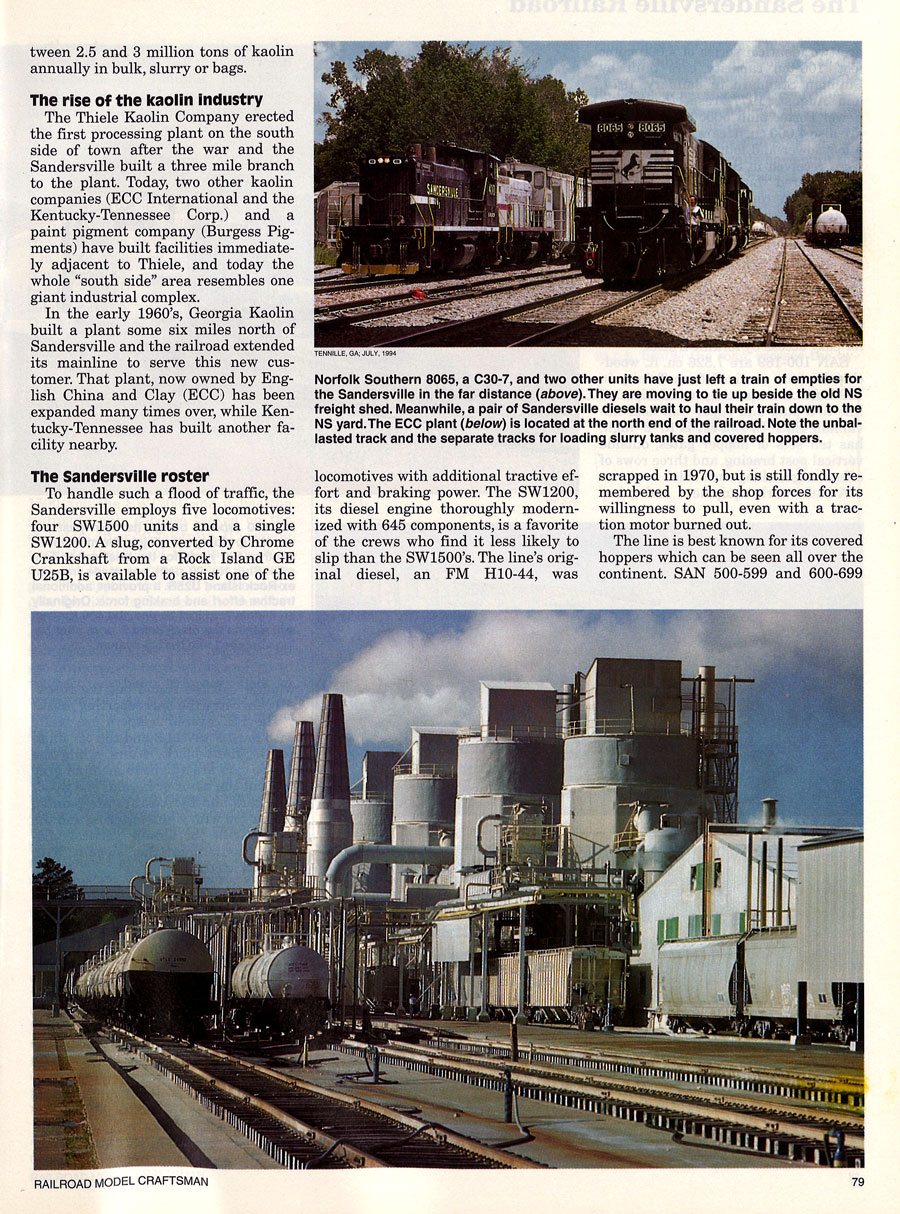

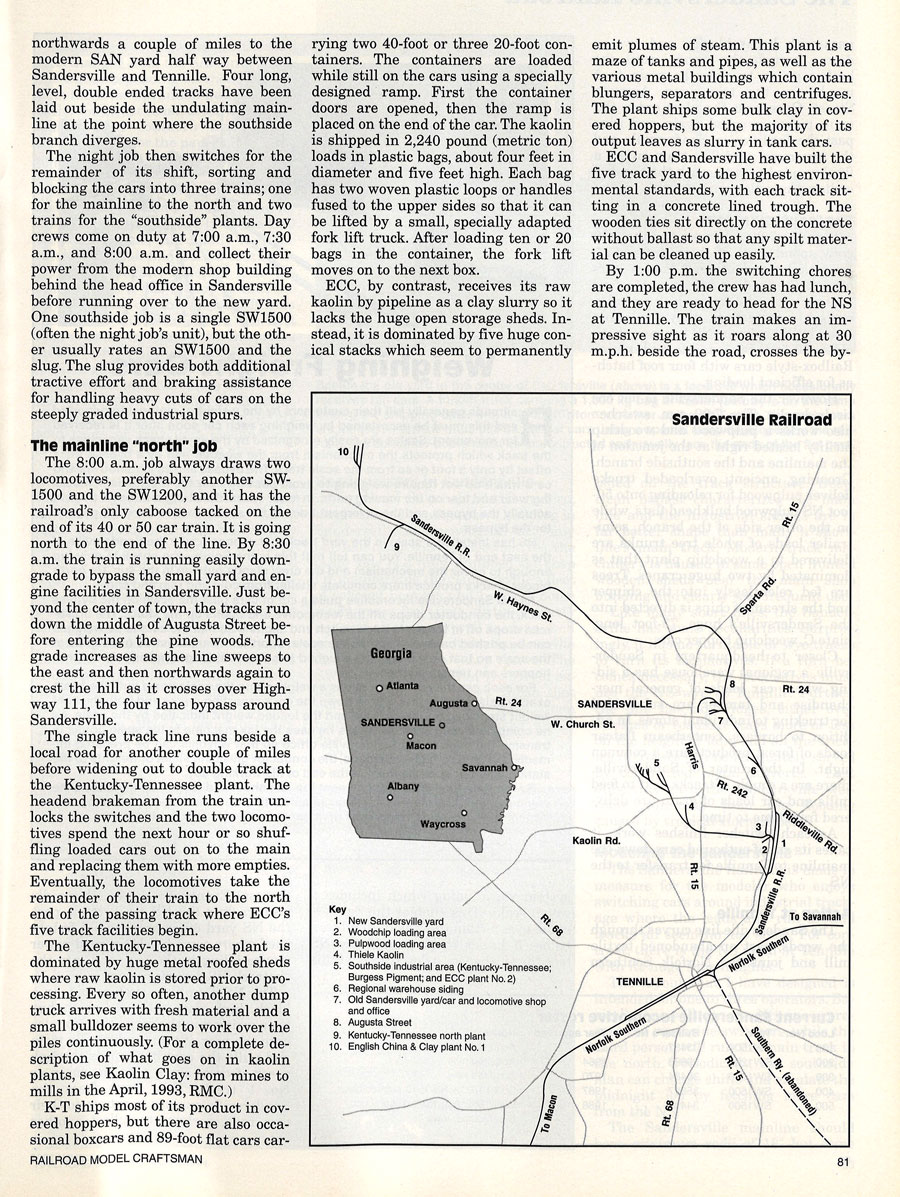


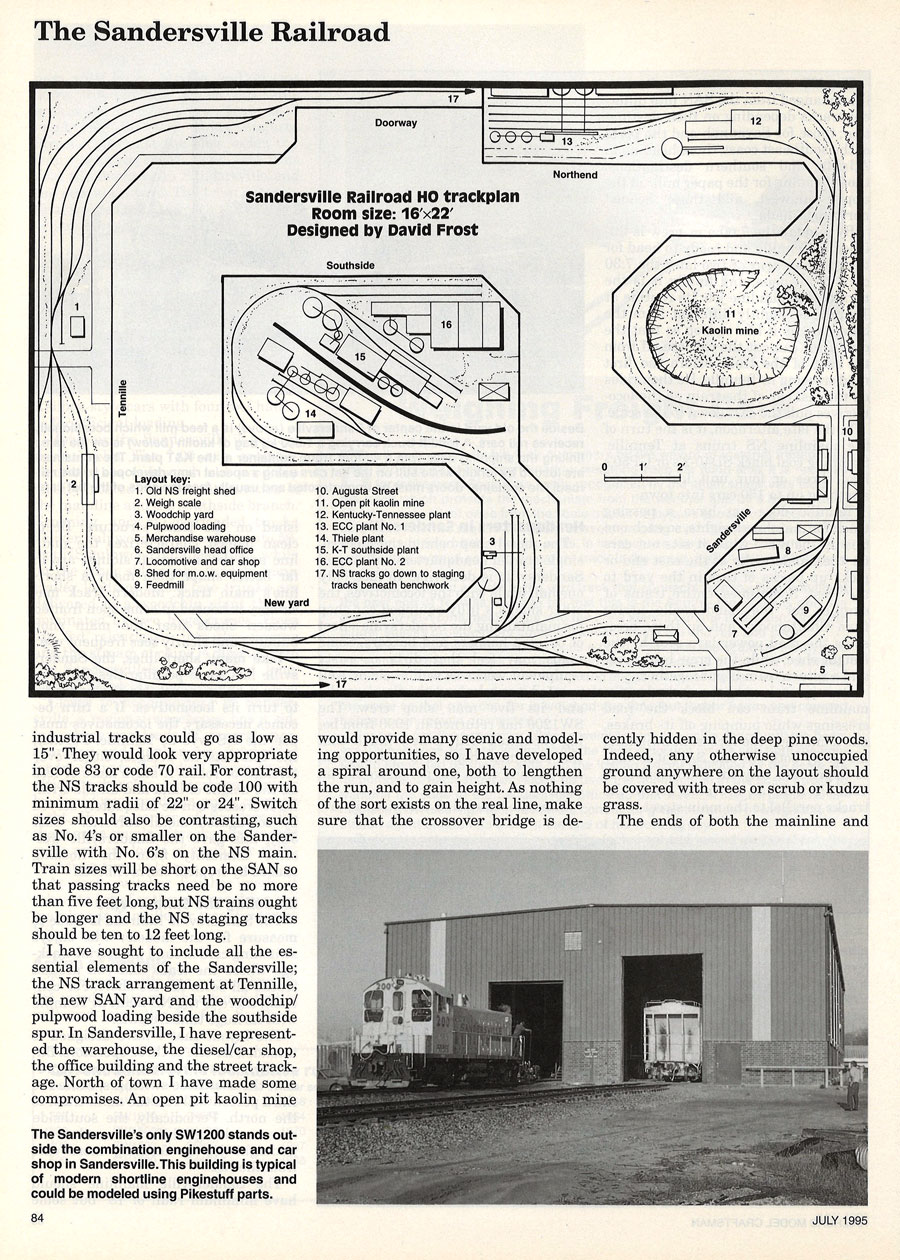
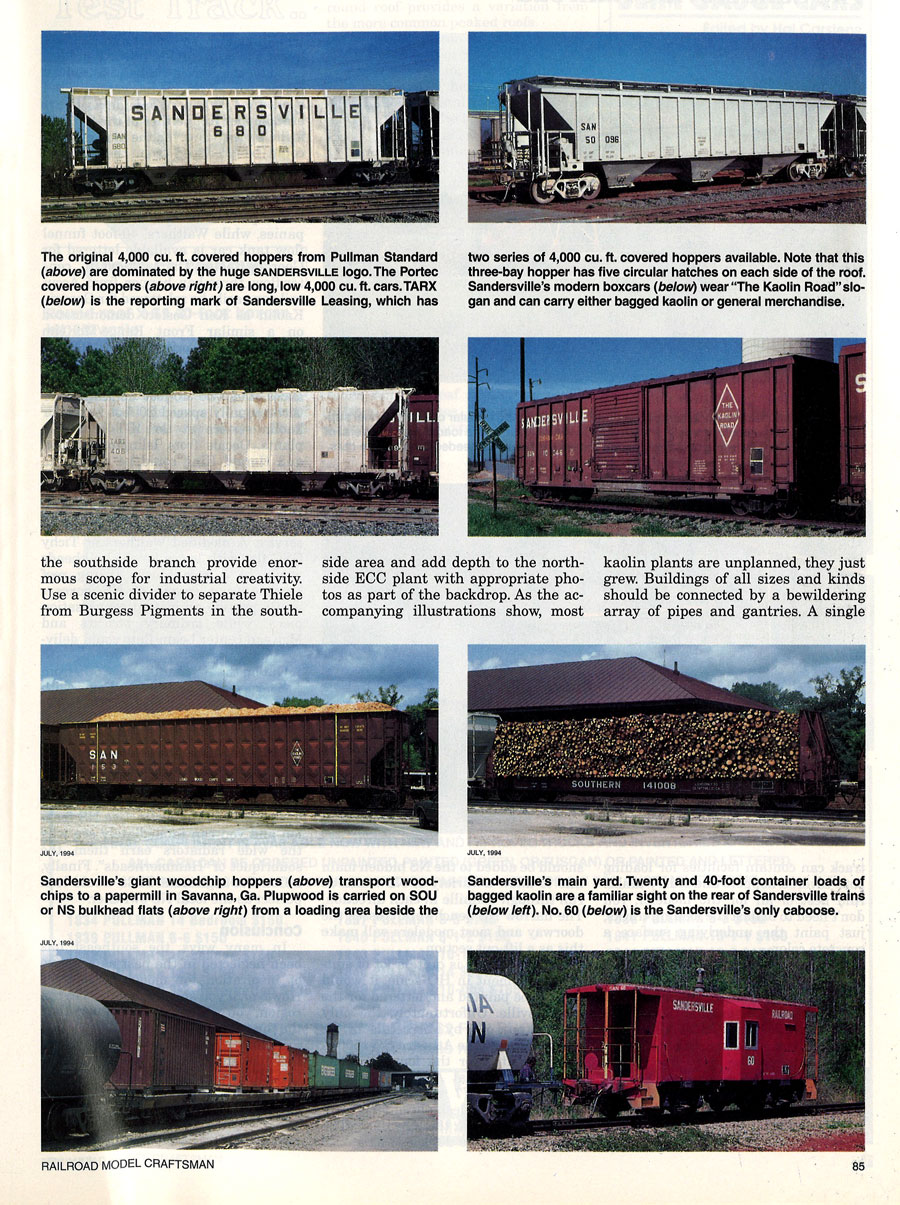
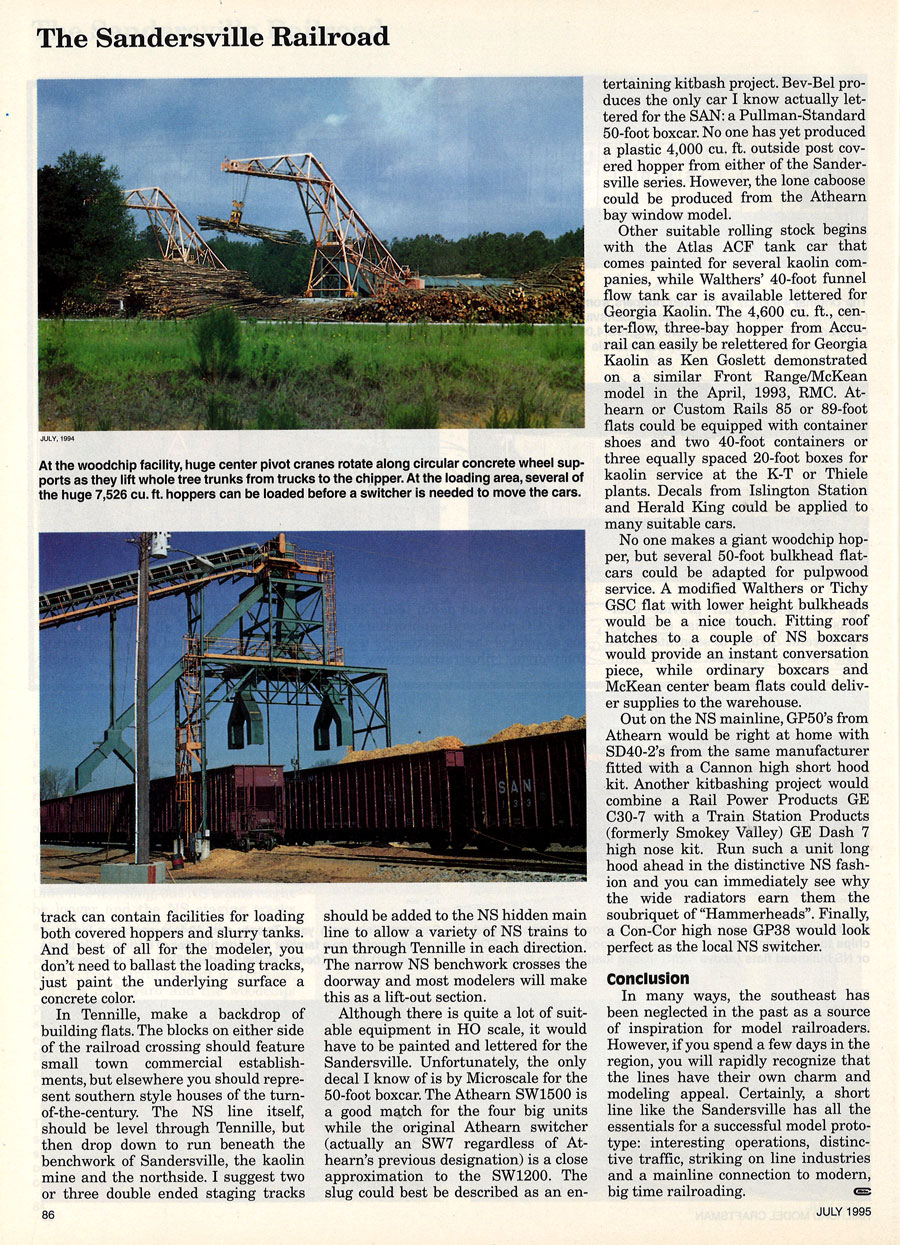
Links / Sources
- Sandersville Railroad Company website
- Wikipedia article for Sandersville Railroad
- Diesel Shop roster for Sandersville
- Railroad Picture Archives Sandersville roster
- Albert M. Langley Jr, Georgia Short Line Railroad Album (Union Station Publishing, 2005) 36-37
- Edward A. Lewis, American Shortline Railway Guide - Fifth Edition (Kalmbach, 1996) 278
